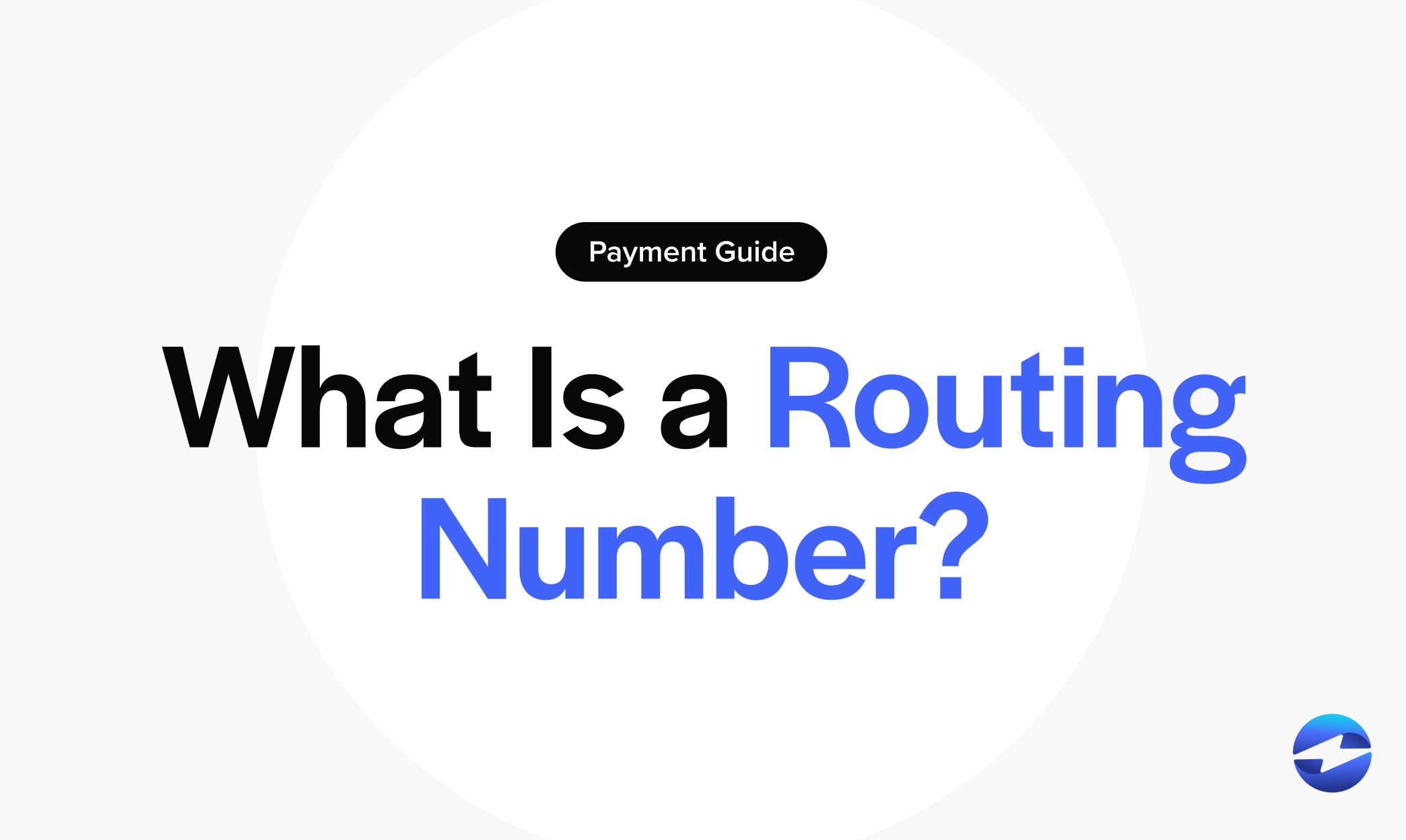Blog > What Is a Routing Number?
What Is a Routing Number?
From digital transfers to physical checks, ensuring your hard-earned money gets where it needs to go is vital. Routing numbers are critical in ensuring seamless transactions, as they consist of a crucial set of numbers that promotes the secure passage of funds.
This article will explore what routing numbers are, how they work, and best practices for using them.
What is a routing number?
Routing numbers, or ABA routing numbers, are nine-digit codes that identify financial institutions within the U.S. that conduct transactions. This number is essential for directing funds to the correct bank during a transfer.
The American Bankers Association (ABA) developed ABA routing numbers in 1910 to streamline the process of sorting, bundling, and shipping paper checks to the check writer’s bank to debit to the check writer’s account. Today, they also facilitate electronic transfers, including Automated Clearing House (ACH) transactions.
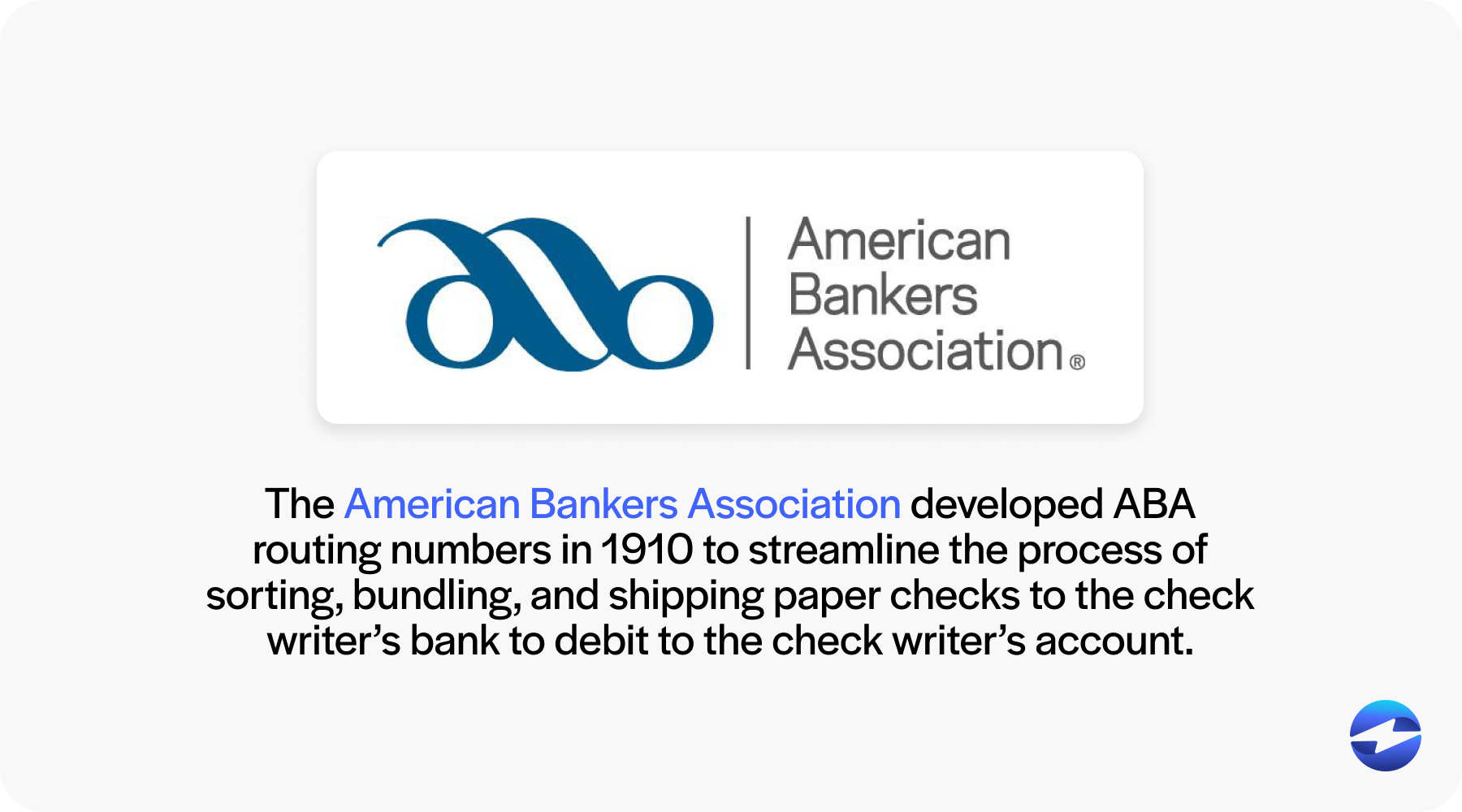
Now that you know what routing numbers are, it’s essential to understand how they work and where to find them.
How do routing numbers work?
When you initiate a transaction, such as a direct deposit or a wire transfer, the routing number determines which financial institution should receive the funds.
For example, when you deposit a check, your bank uses the routing number to process the check and send it to the correct institution. If the routing number is entered incorrectly, it can lead to failed transactions or funds being sent to the wrong party, which is why accuracy is essential.
The routing number is typically structured as follows:
- The first 4 digits represent the Federal Reserve routing symbol, which identifies the Federal Reserve district and the bank’s location within that district.
- The following 4 digits identify the specific financial institution, ensuring the transaction reaches the correct bank.
- The last digit is a check number which is calculated using a mathematical formula to verify the accuracy of the routing number.

Before using a routing number, it’s always a good idea to verify the number to ensure there are no discrepancies during the transaction.
How to verify a routing number
Entering the wrong routing number can lead to failed transactions or your funds being sent to the wrong bank. To avoid any errors, you can verify a routing number using a few different methods:
- Check your bank’s website or app: Most banks list their routing numbers on their official website or mobile banking apps. Make sure you select the correct one for your transaction type.
- Contact your bank directly: Call your bank’s customer service phone number to confirm the routing number for your account and transaction type. This ensures you have the most accurate information.
- Use an online routing number verification tool: There are several websites that allow you to look up routing numbers to verify their validity and the corresponding financial institution.
If you realize you’ve made a mistake, contact your bank or the institution involved immediately to correct the error before the transaction is processed.
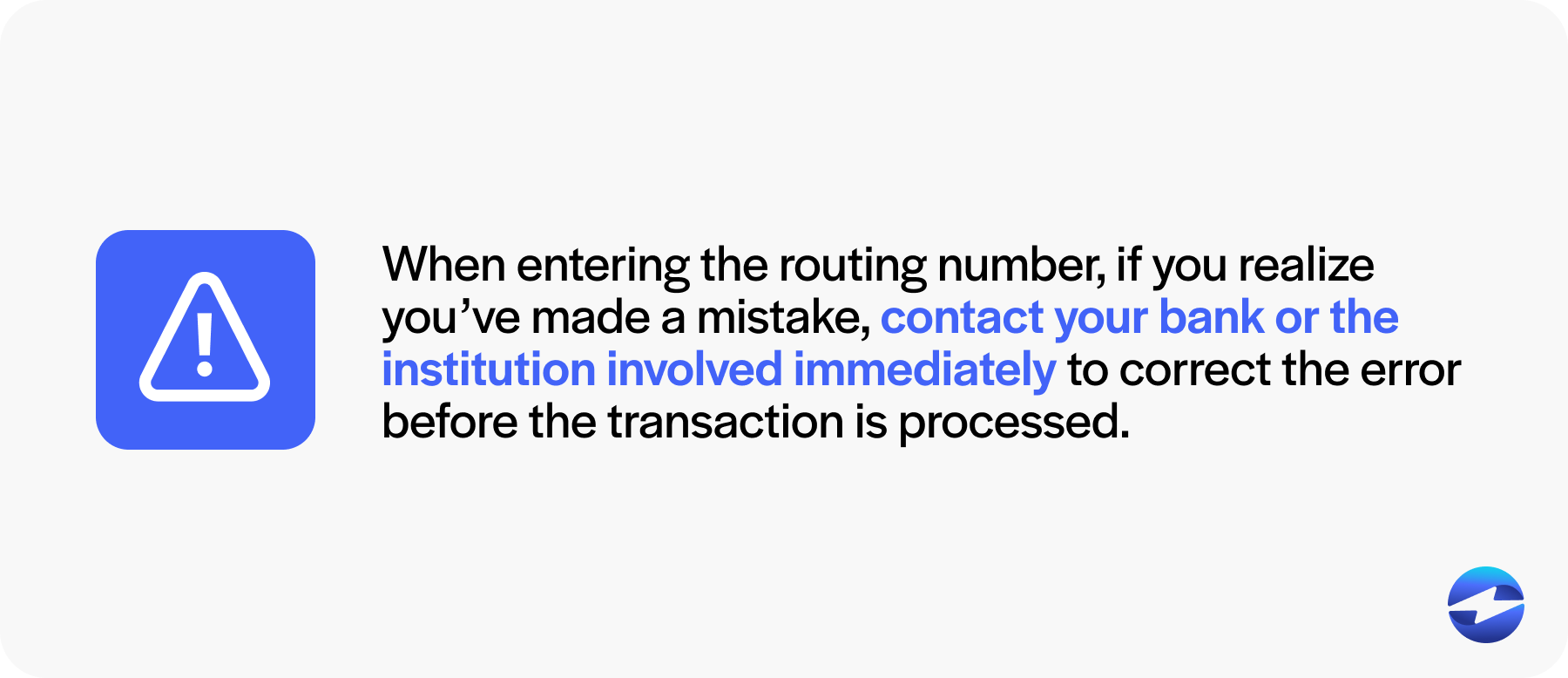
Before you verify your routing number, you first need to locate it, which can be done using a few different resources.
Where to find your routing number
If you’re having trouble locating your routing number, here are a few resources to help you find it:
- Paper check: On personal checks, the routing number is typically found in the bottom left corner, preceding the account number.
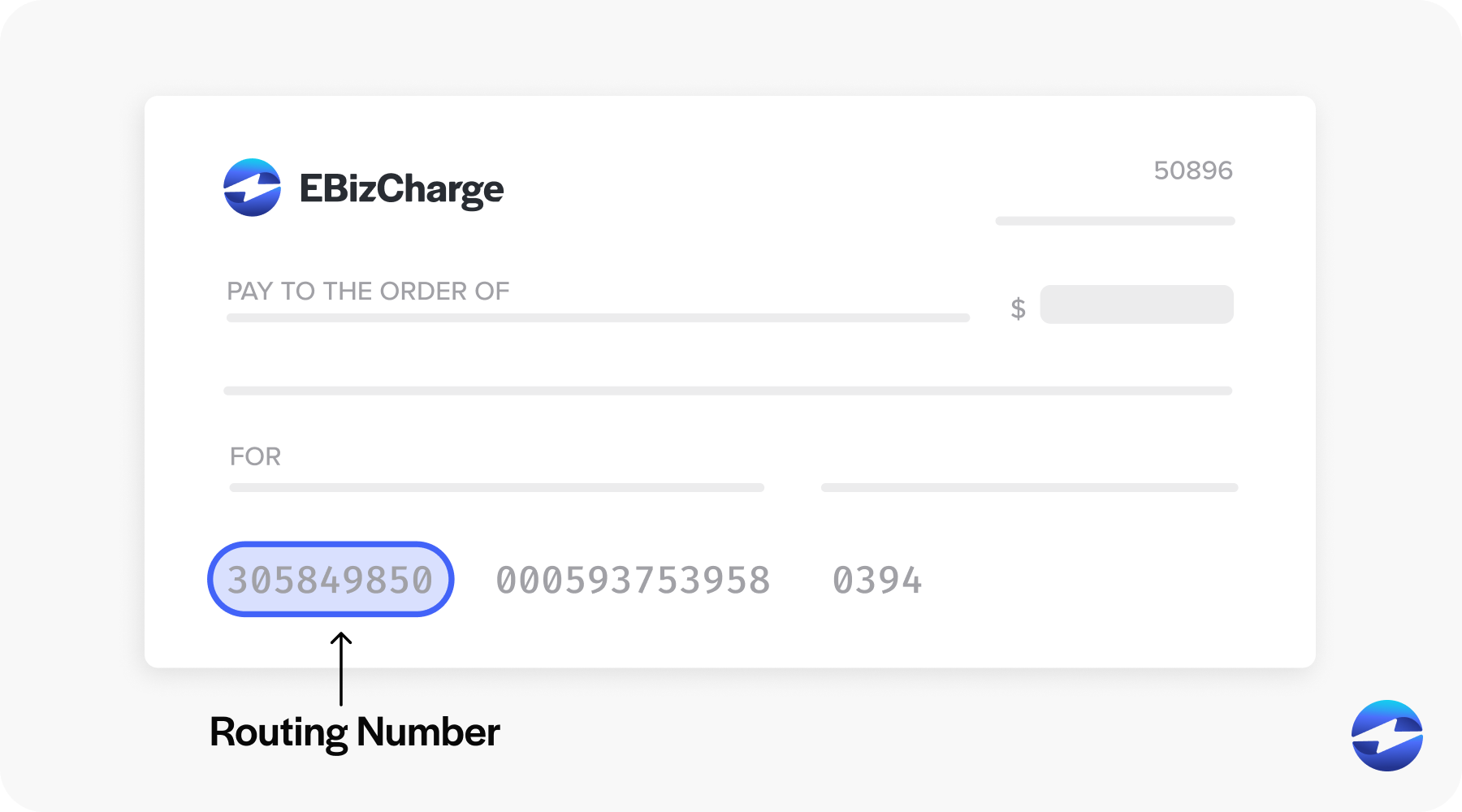
- Bank statements: Bank statements often list the routing number in the upper right-hand corner near the account number.
- Online banking: Customers can usually find their routing number within their online banking portal.
- Mobile app: Many banking institutions provide the routing number via their mobile app.
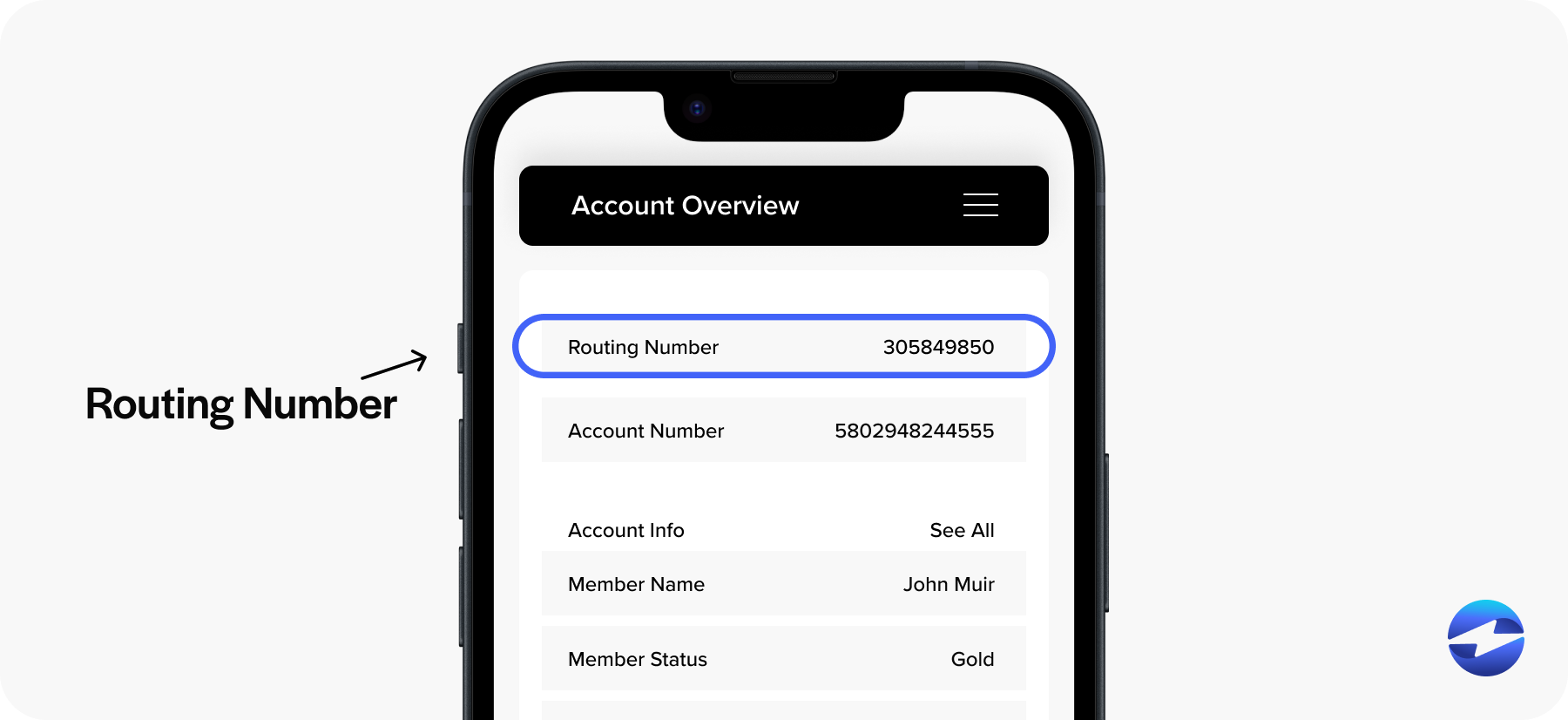
- Bank customer service: You can also contact your bank directly to obtain the routing number.
Now that you know how to locate and verify your routing number, it’s time to see how these numbers work.
Routing numbers in practice
Since routing numbers play a crucial role in various financial transactions involving checks, direct deposits, bill payments, and others, it’s essential to see how these numbers are used for each transaction.
Here’s a closer look at how routing numbers are used in these contexts:
- Check processing: When you process a check, the routing number is like an address for the bank. It helps the check travel through the banking system to ensure the money is taken from the correct bank account.
- Direct deposits: For direct deposits, such as salary payments or Social Security benefits, routing numbers enable employers and government agencies to send funds to the receiver’s appropriate bank account.
- Bill payments: While setting up bill payments, consumers must provide their routing and account numbers to allow their bank to send the payments electronically to the biller’s bank.
- ACH transactions: ACH transactions, such as utility payments or transfers between accounts, use routing numbers to identify the payment’s origin and destination.
- Wire transfers: When using wire transfers, routing numbers help identify the receiving bank. It’s important to note that additional codes, such as the Society for Worldwide Interbank Telecommunication (SWIFT), may be required for international wire transfers instead of just the routing number.
However, routing numbers aren’t used in the same way internationally.
How do routing numbers differ between SWIFT and IBAN methods?
The SWIFT and International Bank Account Number (IBAN) serve similar identification functions for international transactions but have some critical differences from routing numbers.
SWIFT codes are used to identify specific banks globally during international wire transfers. SWIFT codes contain 8 to 11 characters that indicate the bank’s name, country, location, and branch.
IBAN, primarily used in Europe and other countries, contains up to 34 alphanumeric characters containing a country code, two check digits, and a lengthy series of numbers, often encapsulating the domestic account number along with additional identifiers.

While routing numbers facilitate domestic transactions in the U.S., SWIFT codes and IBANS are essential for international payments. SWIFT codes identify banks globally, ensuring funds are directed to the correct institution, while IBANs provide a standardized format that includes both the bank and account information, mainly used in Europe. These international methods add specificity and security to cross-border transactions.
While routing numbers may eventually be phased out and replaced by more modern systems, you should stay updated on best practices for using these numbers.
Best practices for routing numbers
Following best practices when handling routing numbers can ensure secure and accurate transactions.
One crucial step is to verify your routing numbers. Always obtain routing numbers from official bank sources, such as a check, bank website, or direct communication with the bank.
Users should also stay informed about changes to their banks’ routing numbers, especially during bank mergers or operational updates. Banks often notify customers of these changes, but proactively monitoring your bank’s communications can help prevent disruptions.
Before proceeding with large or important transactions, testing the routing number with a small transaction is also advisable. This simple precaution can help verify the routing number is correct, avoiding costly delays or errors.
Additionally, if routing numbers are to be stored for future use, implementing encrypted storage solutions or secure platforms will help your business comply with financial data security standards.
By implementing these best practices, you can guarantee smoother, more reliable financial operations when using routing numbers.
